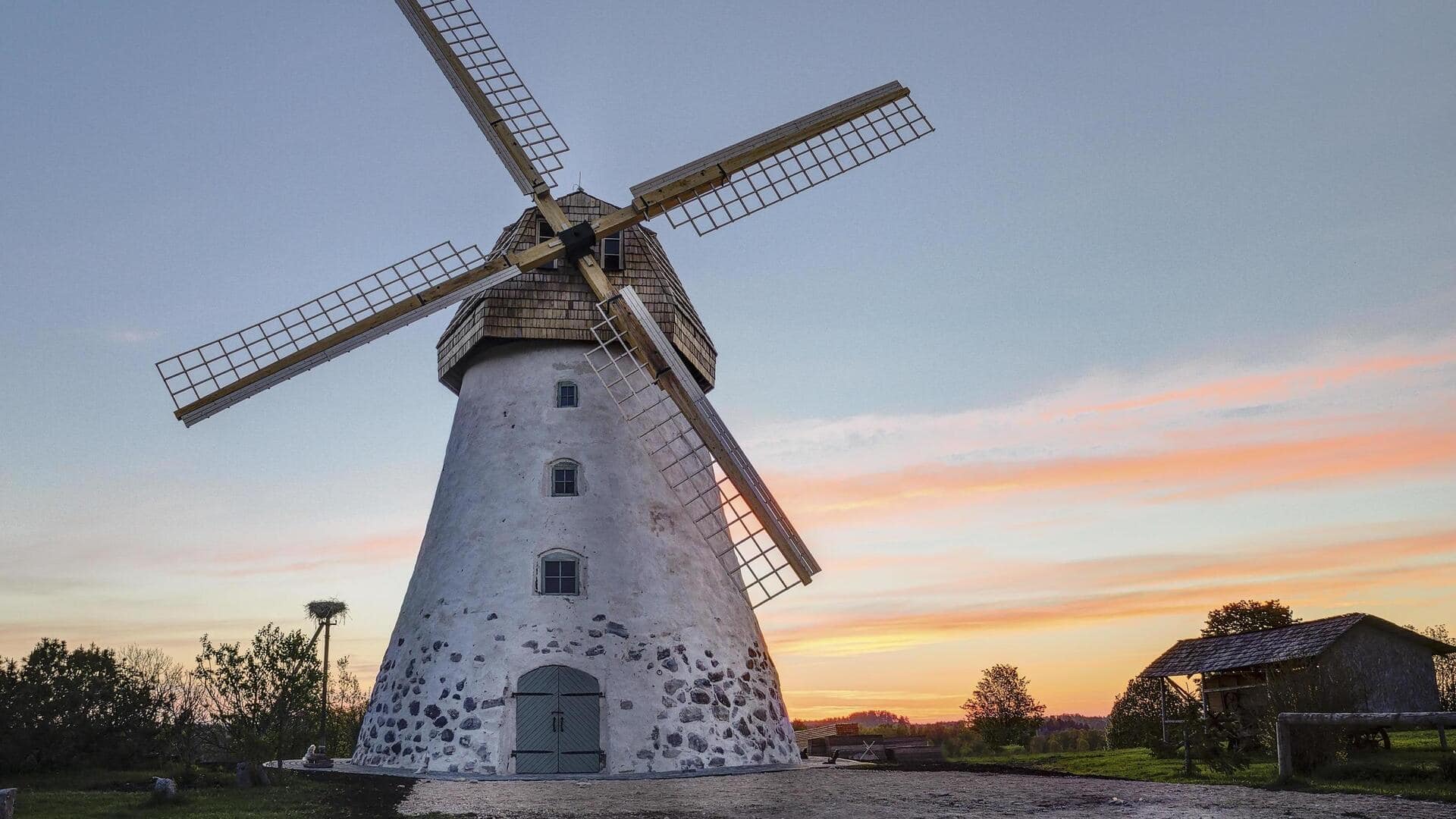
5 fascinating stories behind Dutch windmills
What's the story
Dutch windmills, the country's iconic symbols, are more than just a pretty sight. They tell stories that say a lot about Dutch culture and history. Be it water management, or their contribution to the early industrial era, these structures have been instrumental in shaping the region's development. Here are five stories that unveil secrets behind these remarkable windmills.
Drive 1
The water warriors
In a country where a majority of land sits below sea level, managing water has always been paramount. Dutch windmills served the purpose perfectly by pumping water out of low-lying regions into canals and rivers. This system helped reclaiming land from the marshes and lakes and made it suitable for agriculture and habitation. The brilliant use of wind power to manage water highlights the Dutch people's resilience and innovation in adapting to their environment.
Drive 2
Industrial Revolution pioneers
Long before steam engines powered factories, windmills were at the heart of industrial activity in the Netherlands. They were used to grind grain, saw wood, press oilseeds, and even produce paper. These early industrial applications highlight how windmills contributed significantly to economic growth during a time when manual labor was predominant. Their versatility made them indispensable tools in various industries across the country.
Drive 3
Architectural marvels
The design of Dutch windmills is not just functional but also an architectural feat. Each mill is uniquely constructed based on its purpose and location. Some feature rotating caps that allow them to face into the wind, regardless of direction changes, while others have intricate gear systems for different tasks. This adaptability demonstrates advanced engineering skills long before modern technology emerged.
Drive 4
Cultural Heritage Guardians
Windmills are so much a part of Dutch culture that they are considered symbols of heritage and identity. Many of them have also been preserved as museums or cultural sites where tourists can learn about traditional milling techniques and local history. These efforts ensure the future generations appreciate both the technological advancement made possible by these structures as well as their cultural significance within society.
Drive 5
Community hubs
Historically speaking, many villages grew around central mills, which served not only practical purposes but also social ones. Mills often became gathering places where locals exchanged news or celebrated events together, fostering strong community bonds over time. Despite changing landscapes surrounding them today, this is due largely to preservation efforts. These efforts keep alive traditions associated with such communal spaces throughout years gone past until the present day alike.